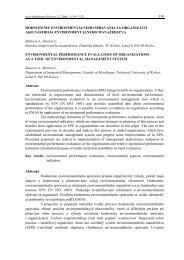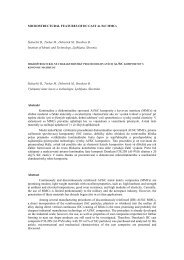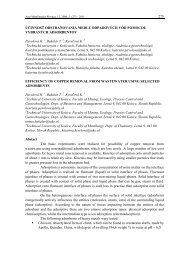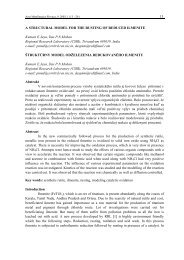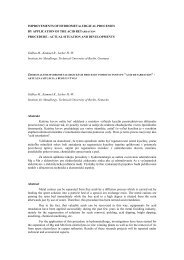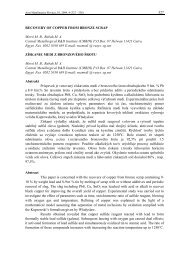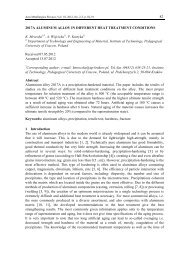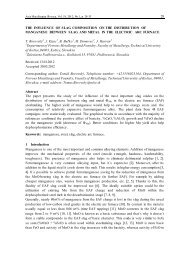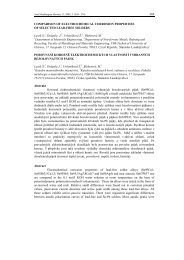199 mathematical modeling of mold-filling and solidification - Acta ...
199 mathematical modeling of mold-filling and solidification - Acta ...
199 mathematical modeling of mold-filling and solidification - Acta ...
You also want an ePaper? Increase the reach of your titles
YUMPU automatically turns print PDFs into web optimized ePapers that Google loves.
<strong>Acta</strong> Metallurgica Slovaca, 15, 2009, 3 (<strong>199</strong> - 207) 204<br />
explicitly, but are computed by solving the flow equations <strong>and</strong> these flow equations are solved in<br />
terms <strong>of</strong> mixture variables. Since densities <strong>of</strong> liquid metal <strong>and</strong> air differ greatly (e.g., by a factor<br />
<strong>of</strong> 7000 for steel), the mixture velocity may not always be an accurate measure <strong>of</strong> the relative<br />
motion <strong>of</strong> metal <strong>and</strong> air [16].<br />
Kim et al. [17] proposed an interesting flow chart <strong>of</strong> the <strong>mold</strong> <strong>filling</strong> computational<br />
procedure, as shown in Fig. 1. In the first stage <strong>of</strong> the numerical analysis, an initial grid is<br />
generated <strong>and</strong> values for the order <strong>of</strong> surface refinement, material properties, boundary<br />
conditions, <strong>and</strong> initial volume fractions are the model input. Then, the time step is increased <strong>and</strong><br />
the <strong>filling</strong> pattern is selected for each element, <strong>and</strong> the free surface is predicted by the <strong>filling</strong><br />
pattern. In the next stage, through the refinement <strong>and</strong> mergence procedure, an adaptive grid is<br />
generated. According to the volumetric fraction at a given time during <strong>filling</strong>, the domain<br />
element for the FEM (Finite Element Method) analysis is created. Then, by the FEM analysis,<br />
the velocity <strong>and</strong> pressure fields are obtained <strong>and</strong> the flow rate in each element is calculated.<br />
Subsequently, the procedure <strong>of</strong> advection treatment is accomplished <strong>and</strong> the volume fraction in<br />
each element is obtained. These procedures are iterated until the current <strong>filling</strong> time reaches the<br />
total time.<br />
Fig.1 Flow chart <strong>of</strong> the computational procedure [17]<br />
One <strong>of</strong> the requirements that should be satisfied in the VOF method for <strong>mold</strong> <strong>filling</strong>,<br />
is the conservation <strong>of</strong> the F(r,t) function even though with the presence <strong>of</strong> convection. This<br />
method uses a minimum <strong>of</strong> stored information <strong>and</strong> it follows regions rather than boundaries,<br />
which avoids the logic problems associated with intersecting surfaces. The derivatives <strong>of</strong> this<br />
function can be used to estimate the orientation <strong>of</strong> the fluid surface, improving the<br />
computational efficiency [18].



